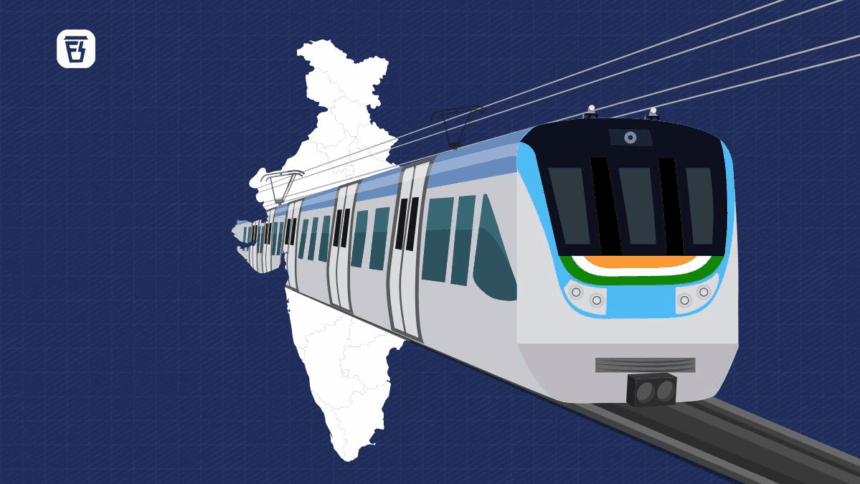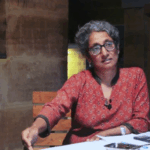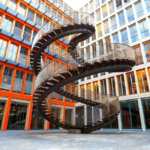Metro rail systems in India have become some of the most influential public works projects in the country’s modern history. Their design and engineering reflect the changing needs of dense cities and the technical creativity required to address them. For professionals, they are a field of constant innovation, and for students, they are a study in how architecture, engineering, and urban planning come together in real time.
From Kolkata’s First Tracks to a Nationwide Network
Picture Courtesy- Medha
The journey began in 1984 with the Kolkata Metro, the first of its kind in India. Designed during a period when resources and technology were limited, the project relied heavily on manual tunnelling and cut-and-cover construction. Architects and engineers worked under challenging conditions, managing land acquisition in a city with narrow streets and heritage structures. The result was a functional yet straightforward design that prioritised durability over ornamentation.
This early work laid the foundation for how subsequent cities approached their own systems. In later years, metro projects evolved to incorporate deep-bore tunnelling, complex interchange stations, and advanced passenger flow management, marking a shift from purely functional layouts to designs that also considered user comfort and aesthetics.
Station Design Highlights
Modern Indian metro stations have become more than just boarding points. Delhi Metro stations such as Hauz Khas Interchange illustrate the scale and planning needed to manage multiple lines in one space. Wide concourses, clearly zoned passenger areas, and intuitive wayfinding graphics make navigation easier for first-time users.
In Kochi, local culture finds its way into design. The Vytilla station integrates motifs from Kerala’s traditional architecture while keeping structural elements contemporary. Elevated concourses provide panoramic views of the surrounding city, showing how even utilitarian spaces can connect passengers with the urban landscape.
Tunnelling Techniques in Practice
Picture Courtesy- Encardio
Metro tunnelling in India has seen some of the most complex engineering work in recent decades. The Mumbai Metro’s coastal route included an underwater tunnel beneath the Mithi River, requiring continuous monitoring of water ingress and ground stability. Advanced tunnel boring machines with pressure balance systems allowed the excavation to progress without major disruptions to surface activity.
Chennai Metro faced the challenge of tunnelling through a mix of hard rock and soft soil, which demanded frequent adjustments to cutting heads and careful ground conditioning. These projects demonstrate how precise geotechnical planning can prevent costly delays and maintain the safety of adjacent structures.
Engineering Milestones in Indian Metro Rail Projects
1. Kolkata Metro Line 1
Pioneered the concept of underground mass transit in India using cut-and-cover methods.
2. Delhi Metro’s Phase III
Introduced long-span elevated sections and interchange stations capable of handling more than five lakh daily passengers.
3. Mumbai Metro Aqua Line
Delivered India’s first metro tunnel under a river using advanced pressure-balanced boring machines.
4. Kochi Metro
Integrated elevated viaducts with minimal disruption to wetlands and waterways.
5. Chennai Metro’s Washermenpet Station
Engineered to sit below sea level with advanced waterproofing and ventilation systems.
Digital Tools for Design and Execution
Picture Courtesy- Rethinking the Future
The use of Building Information Modelling has become a standard in planning metro infrastructure. Detailed 3D models allow architects and engineers to coordinate everything from tunnel alignments to station mechanical systems before ground is broken. This reduces conflicts during construction and ensures a high level of accuracy in as-built documentation.
For operational systems, simulations are run to model passenger movement during peak times. These digital rehearsals help refine escalator placement, ticket counter locations, and platform access routes, making stations more efficient.
Metro Rail in Popular Culture
Indian metro systems have also found their way into popular culture, serving as backdrops for key scenes in cinema. The Kolkata Metro played a central role in the thriller Kahaani, with sequences shot in real station environments. Delhi Metro has appeared in films such as Piku, where its clean interiors and punctual operations were showcased. Mumbai Metro was featured in OK Jaanu, highlighting the network as part of the city’s modern identity. Such depictions reinforce the metro as not just infrastructure but a symbol of the urban experience.
Blending Architecture with Public Utility
Picture Courtesy- Architecture Live
What sets Indian metro projects apart is the scale at which they blend infrastructure with architectural expression. The use of natural light in elevated stations, the integration of public art into concourse walls, and the thoughtful design of interchanges show how form and function can coexist. In cities like Bengaluru and Pune, upcoming stations are being designed with flexible spaces that can adapt to future expansions or commercial uses without major structural overhauls.
Looking Ahead
Picture Courtesy- Metro rail news
As metro networks continue to expand into new cities and extend existing lines, the architectural and engineering challenges will evolve. Deep tunnelling under heritage districts, climate-responsive station designs, and renewable energy-powered facilities are already being discussed. For students, these projects offer living laboratories to understand complex problem-solving in real-world constraints. For professionals, they are a chance to push the boundaries of design and execution, ensuring that the metro remains a cornerstone of India’s urban future.

Ar. Pranjali Gandhare
Architect | Architectural Journalist | Historian








